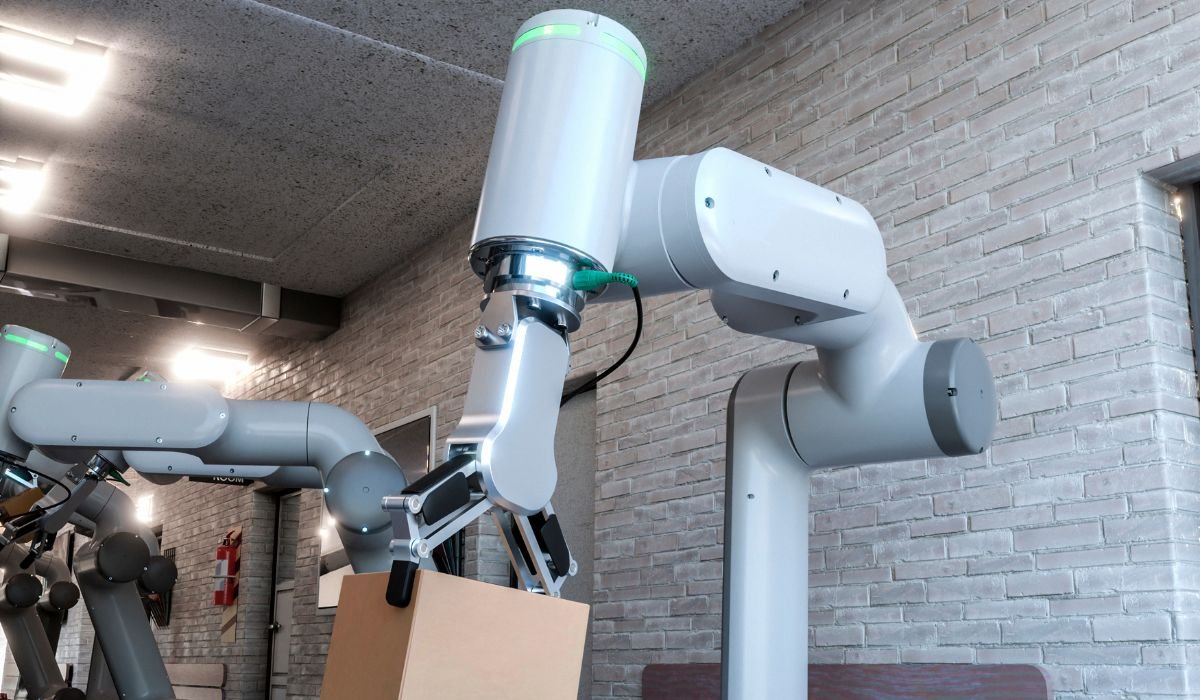If you’ve ever searched for “Kirby Dedo,” you’ve likely encountered a confusing digital landscape. Is it a meme? A character? A generic tool? The internet’s ambiguous results hide a profound industrial truth. Behind the memes lies one of the most critical, yet largely unseen, components in modern manufacturing: an ultra-precision, high-speed pneumatic pick-and-place unit. This is the true Kirby Dedo, a masterpiece of elegant engineering that quietly assembles the digital world. In this article, we will dissect its mechanical genius, trace its enduring legacy, and reveal why this decades-old design remains the unsung robotic finger at the heart of global electronics production.
Unpacking the Mechanism: What Exactly is a Kirby Dedo?
At its core, the Kirby Dedo is a study in focused engineering. It doesn’t aim to be a multi-axis, all-purpose robot. Instead, it perfects one simple, critical motion: picking a component from one location and placing it with micron-level precision into another. To understand its brilliance, we must break down its definitional components.
A Definitional Breakdown: Pneumatic, Rotary, and Ultra-Precision
The Kirby Dedo’s identity is captured in three key terms:
- Pneumatic: This unit is powered by compressed air. Unlike electric servo motors with complex digital controls, the Kirby Dedo uses the instantaneous force of pressurized air to actuate its pistons. This makes its movements exceptionally fast, simple, and reliable.
- Rotary: The unit’s primary motion is a fixed-angle rotation, typically 90 or 180 degrees. It operates like a precise, mechanical swing, moving components from a “pick” position to a “place” position along a guaranteed, repeatable arc.
- Ultra-Precision Pick-and-Place: The “pick-and-place” function is its raison d’être. But it’s the “ultra-precision” that sets it apart. We are talking about repeatability in the range of microns—thousandths of a millimeter. In the world of assembling 0201 chip capacitors or micro-BGA processors, this precision isn’t a luxury; it’s an absolute necessity.
The Anatomy of a High-Speed Motion Cycle
The operation of a Kirby Dedo is a ballet of compressed air and mechanical stops, executed in a fraction of a second. A single cycle unfolds with breathtaking speed and reliability:
- The Pick: A central piston, driven by compressed air, extends downward. At the end of this piston is a miniature vacuum cup or nozzle. As it makes contact with the component, a vacuum is applied, securely gripping the part.
- The Lift: The piston immediately retracts, lifting the component.
- The Place: The entire head assembly then rotates through its fixed angle (e.g., 180°), carrying the component to its target location on a circuit board. This rotation is mechanically guaranteed, often using a precision cam or stop, eliminating any chance of drift.
- The Release: The piston extends once more, descending to the exact placement height. The vacuum is then released, and a small, positive air “blow-off” is often triggered to ensure the component is perfectly seated onto its solder paste pad.
This entire sequence—pick, lift, rotate, place—is what makes the kirby dedo in electronics manufacturing so indispensable. It is a motion perfected.
Why a Classic Design Endures: The Unbeatable Advantages
In an era increasingly dominated by digital servos and AI-driven robotics, the persistence of a pneumatic workhorse like the Kirby Dedo seems anachronistic. Yet, it thrives because its fundamental advantages remain unbeatable for specific, high-volume tasks.
Speed, Simplicity, and Reliability
This is the holy trinity of the Kirby Dedo’s value proposition.
- Speed: Compressed air provides a “snap” actuation that is incredibly difficult for electric motors to match for small, lightweight components. The cycle times are measured in milliseconds, enabling production lines to achieve staggering placement rates.
- Simplicity & Reliability: The unit’s mechanical design is elegantly simple. With far fewer moving parts than a servo-driven system—no complex motor windings, encoders, or drives—there is very little that can fail. This translates to near-perfect uptime, a non-negotiable requirement in 24/7 manufacturing environments where minutes of downtime cost thousands of dollars. This legendary automation reliability is why production managers sleep soundly.
Cost-Effectiveness and Compactness
From a financial and design perspective, the Kirby Dedo is unrivaled.
- Cost-Effectiveness: A single pneumatic pick-and-place unit is significantly cheaper to manufacture, purchase, and maintain than a multi-axis servo robot. When a single Surface Mount Technology (SMT) machine requires dozens of placement heads, this cost differential becomes monumental.
- Compactness: The Kirby Dedo typically features a small, cylindrical footprint. This allows machine designers to densely pack an array of these units into a single machine head, creating a highly parallelized assembly system. This dense integration is why modern SMT lines can place tens of thousands of components per hour.
Handling Delicate Components
One might assume such a fast, pneumatic system would be brutish. The opposite is true. The mechanically defined motion and precisely controlled vacuum provide a consistent, “soft-touch” handling that is ideal for fragile Surface Mount Technology (SMT) components. The unit doesn’t rely on complex force-feedback sensors; its gentleness is engineered directly into its reliable, repeatable mechanical operation.
Kirby Dedo in the Wild: Critical Applications Today
The kirby dedo is not a museum piece; it is a active, vital technology working tirelessly on the front lines of high-tech manufacturing across the globe.
The Backbone of SMT Manufacturing
The original and most famous home of the Kirby Dedo is in the world of Surface Mount Technology (SMT). Every printed circuit board (PCB) inside your smartphone, laptop, smart TV, and gaming console is populated by an automated assembly line. These SMT lines feature “placement machines” that are essentially chassis housing dozens, sometimes hundreds, of individual Kirby Dedo units. Each unit is dedicated to placing a specific resistor, capacitor, or integrated circuit onto the board as it streams past. When you consider the billions of devices produced annually, the scale of this component placement operation is almost unimaginable, and the Kirby Dedo is at the very center of it.
Beyond Consumer Electronics
While consumer electronics represent its largest battlefield, the Kirby Dedo’s precision and reliability make it critical in other demanding industries:
- Medical Devices: The assembly of pacemakers, insulin pumps, and diagnostic equipment requires absolute precision and sterility. The Kirby Dedo’s clean, reliable operation (no sparking motors) and ability to handle miniature, sensitive components make it a perfect fit for this zero-defect environment.
- Automotive Electronics: Modern vehicles are rolling computers, dependent on Engine Control Units (ECUs), infotainment systems, and advanced driver-assistance systems (ADAS). The high-volume, zero-defect assembly of these critical PCBs often relies on the proven performance of Kirby Dedo technology.
The Future Legacy: Adapting to the Age of Cobots
As manufacturing evolves towards greater flexibility and collaboration, one might wonder about the place of a fixed-function pneumatic unit. The answer lies not in its obsolescence, but in its legacy.
The Dedo DNA in Modern End-of-Arm Tooling (EOAT)
The core principle of the Kirby Dedo—a simple, robust, and task-specific “hand”—lives on. Its spiritual successors are the specialized grippers and pneumatic fingers used as End-of-Arm Tooling (EOAT) for Collaborative Robots (Cobots). The philosophy remains the same: for a repetitive, high-cycle task, the simplest, most reliable mechanical solution is often the best. The Dedo’s DNA is evident in these modern, compact, single-purpose tools.
Furthermore, the future is not a choice between pneumatic and electric, but a synergy. The most advanced automation cells today are hybrid systems. They may use high-speed, reliable Kirby Dedo units for the bulk of simple component placements, while reserving more expensive and flexible servo-driven robots for complex pathing or odd-form components. This pneumatic vs electric pick-and-place debate is thus resolved through pragmatic integration, leveraging the strengths of both technologies.
Conclusion
The Kirby Dedo is a powerful testament to a timeless engineering truth: the most transformative technologies are often not the flashiest. They are the quiet, reliable, and brilliantly simple solutions that perform a single function to perfection, billions of times over, without fanfare. It is an unsung hero, a robotic finger that has, quite literally, built our modern world one tiny component at a time.
Its story reminds us to look beyond the user-facing gadgets and apps and appreciate the foundational industrial hardware that makes them possible. For the industrial engineer or manufacturing manager, it serves as a call to value proven performance over perceived progress. In the relentless pursuit of efficiency, sometimes the most effective and cost-efficient choice is the decades-old, robust pneumatic solution that simply, and flawlessly, gets the job done.

